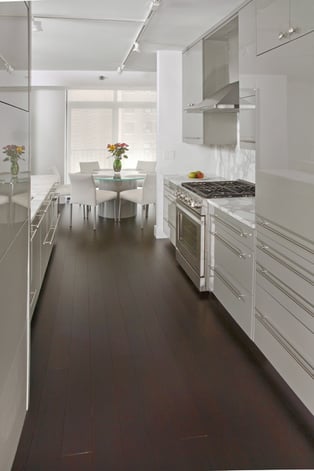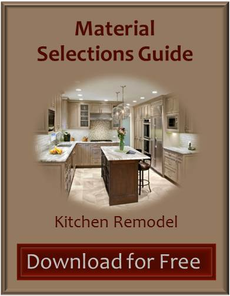 Hardwood floors are beautiful and they complement any Chicago kitchen design. That being said, they aren’t for everyone. Hardwood floors are durable and long-lasting (otherwise you couldn’t “ooh and ah" over the original hardwood flooring in your neighbor’s historic home), but they also require work and all hardwoods are prone to scratching, denting, wear-and-tear without proper treatment and maintenance.
Hardwood floors are beautiful and they complement any Chicago kitchen design. That being said, they aren’t for everyone. Hardwood floors are durable and long-lasting (otherwise you couldn’t “ooh and ah" over the original hardwood flooring in your neighbor’s historic home), but they also require work and all hardwoods are prone to scratching, denting, wear-and-tear without proper treatment and maintenance.
For these reasons – and depending on household lifestyle and preferences – you may opt to use tile or something sturdier in the kitchen floors. That way you can save the hardwood for areas of the house with lower traffic and activity levels.
We won’t speak about hardness or wood specifics in this piece; for that you can read, What Are Some Recommended Types of Hardwood Flooring.
The Good About Hardwood Kitchen Floors
Here are some of the benefits of using hardwood in your kitchen.
It unites other areas of the home
With the contemporary mode of using open concept kitchen designs, hardwood floors can be a unifying force in the overall vision of the entire kitchen/living area. In addition to keeping the flooring consistent between spaces, the finish of your hardwood floors may also tie in to the hardwood finish of the wood trim in the living room, or the dining room table, so it creates visual resonance.
They are timeless
Since hardwood lasts for generations, and has been used as kitchen flooring for generations, it is the epitome of timeless. If well-maintained, you have flooring that not only stands the test of time, but is considered “in-style” regardless of what future homeowners choose to do with countertops or cabinetry – all of which can be selected to meet individual taste preferences while being compatible with the existing flooring.
Hardwood kitchen floors are universal – in more ways than one
Hardwood floors are universal in multiple ways. First, they work interchangeably in traditional, transitional and modern home designs. Second, hard-surface flooring is a tenet of most universal designs because – unless you’re a fan of ultra-low profile carpet – it’s the easiest surface for wheelchairs, walkers and other mobility aids to navigate.
The Bad About Hardwood Kitchen Floors
Then, for some of us, hardwood floors aren’t the best option. Here are some of the less-desirable attributes:
Wood flooring is vulnerable to water damage
While trees may rely on water to grow, milled hardwood doesn’t like to sit with standing water for any length of time. It creates warping, splitting, mushing and rotting. In addition to liquid spills that aren’t cleaned up in a timely manner, hardwood is also damaged in underground or interior/hidden leak issues that aren’t noticed and repaired in time to save them.
They do show wear-and-tear
If you like the “pristine” or “just like new” look – hardwood may not be the right product for you. Even the most durable of hardwood species will ultimately show signs of wear between their installation and inevitable sand/finish treatment in 10 to 15-years. If you don’t want to see any scratches or scuffs of any kind, tile may be your best bet.
You’ll need to sand and finish every decade or so
Regardless of how well you maintain them, hardwood floors should be sanded and finished every 10- to 15-years or so. This helps to remove wear, even out uneven surface settling and give them a new lease on life. The exception to this is pre-finished hardwood flooring (also called engineered wood).
Interested in having an honest conversations with Chicago kitchen design professionals who prioritizing customer satisfaction over upselling the most expensive product? Contact us here at Kitchens & Baths Unlimited and schedule an appointment.



